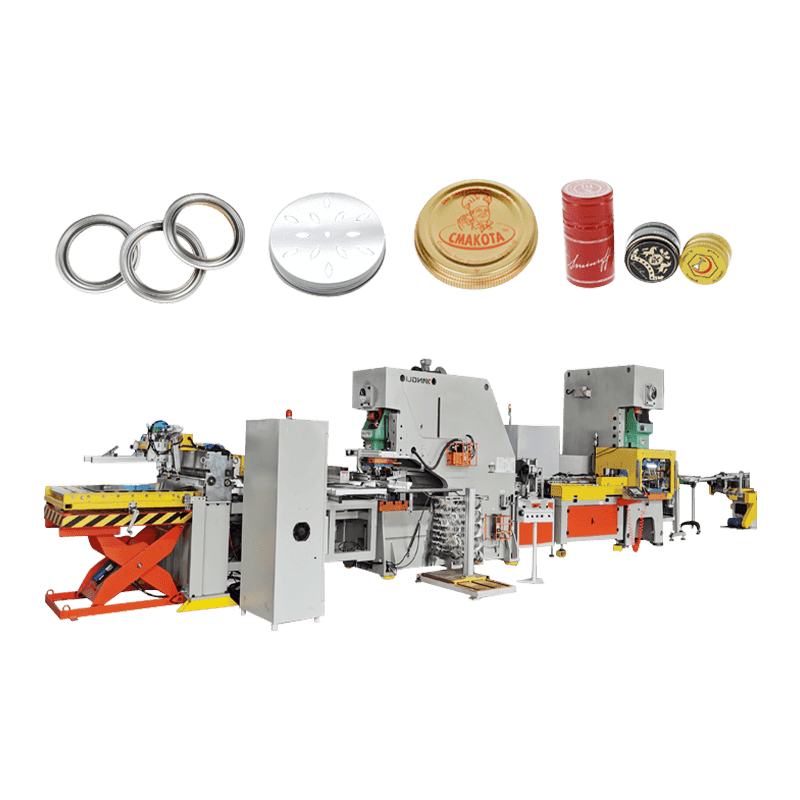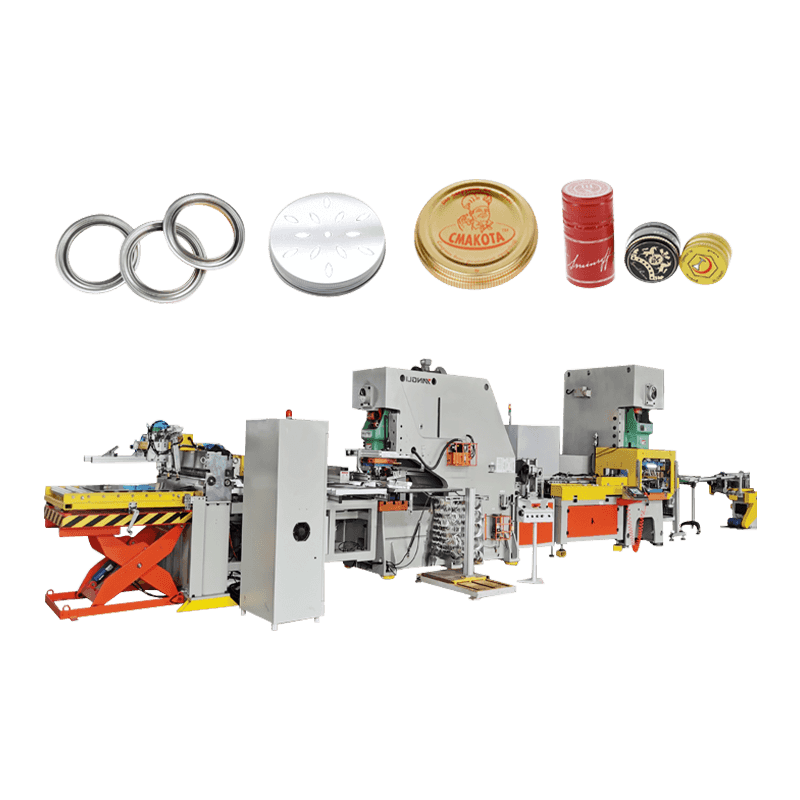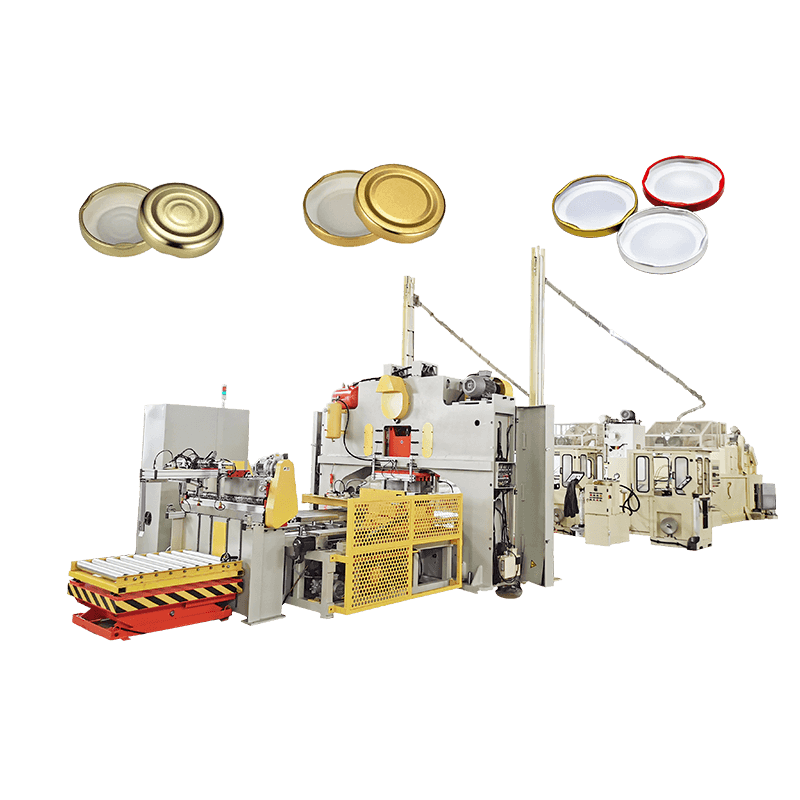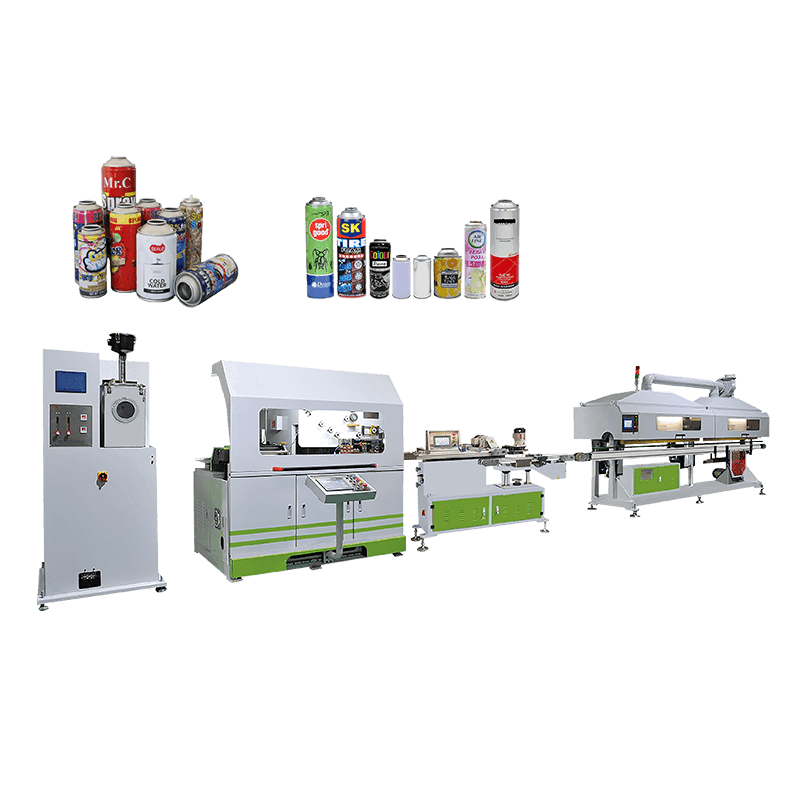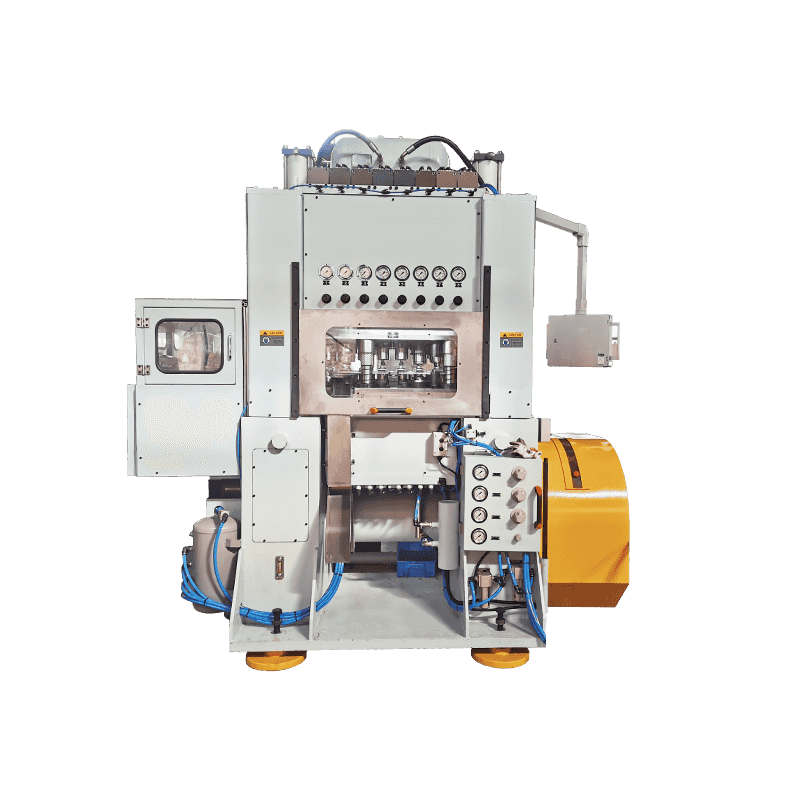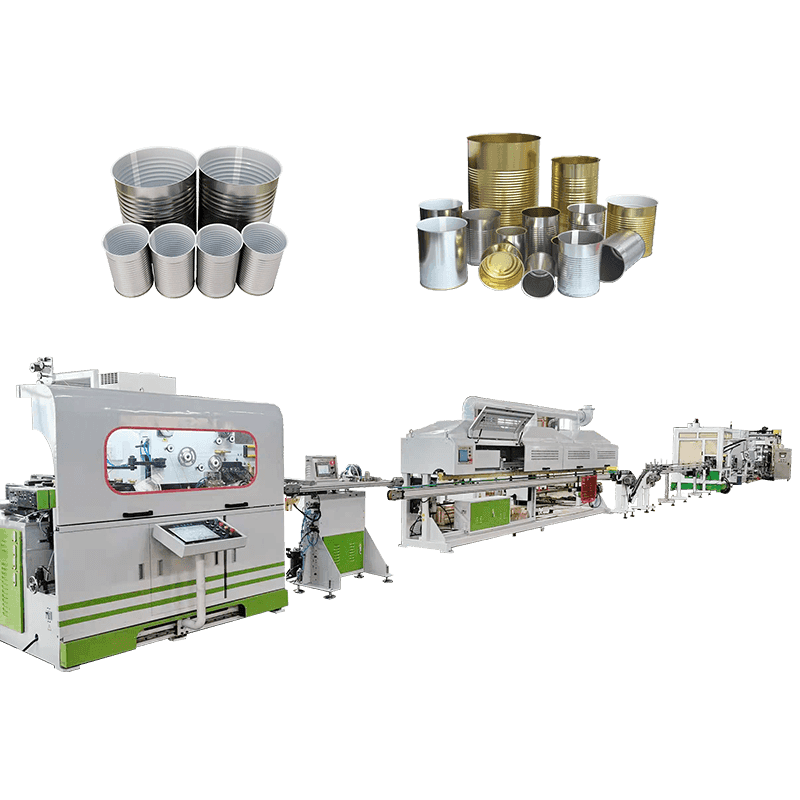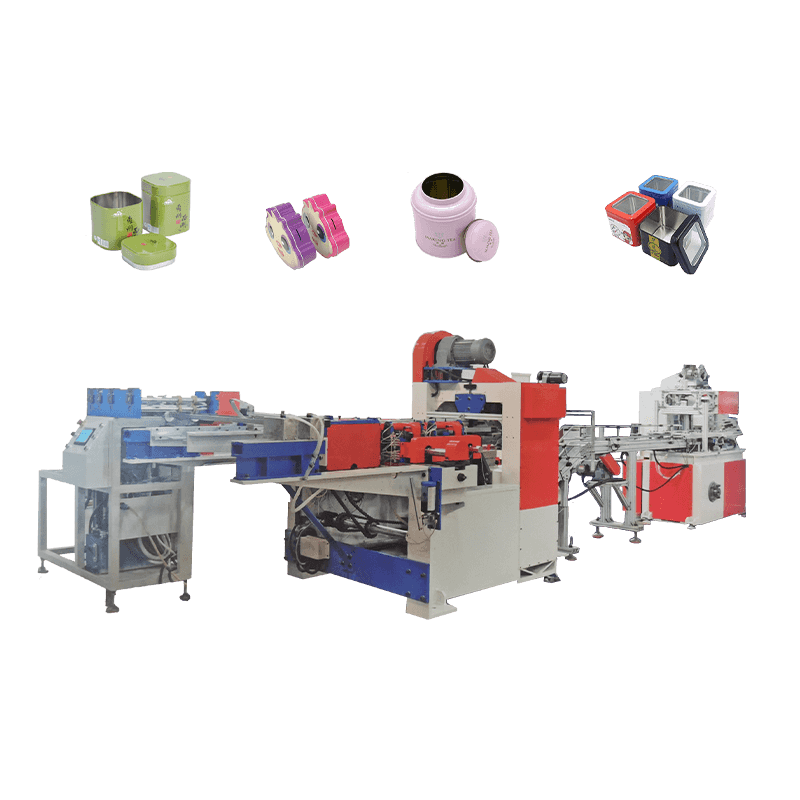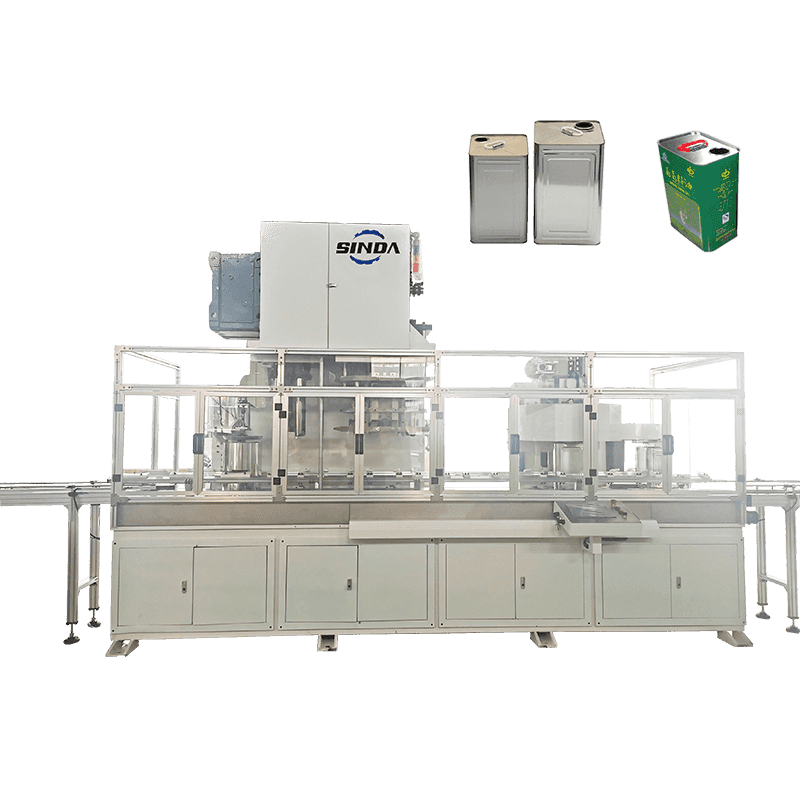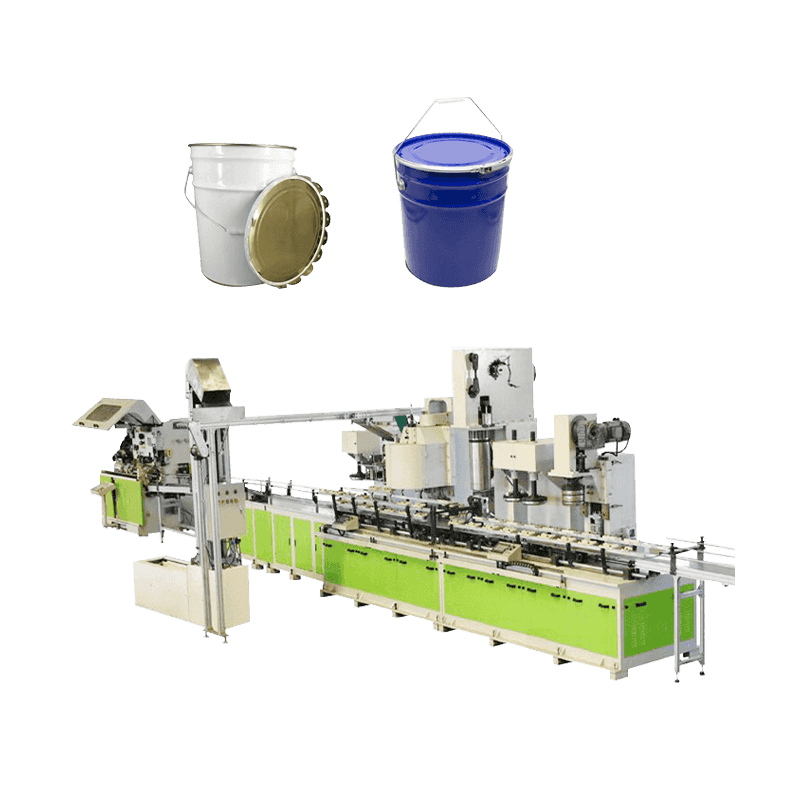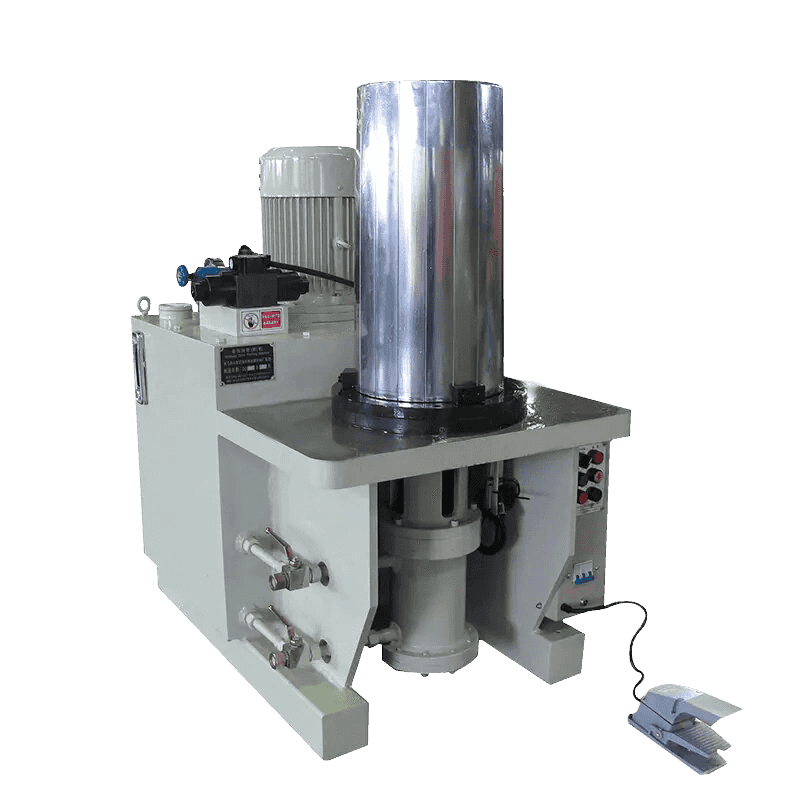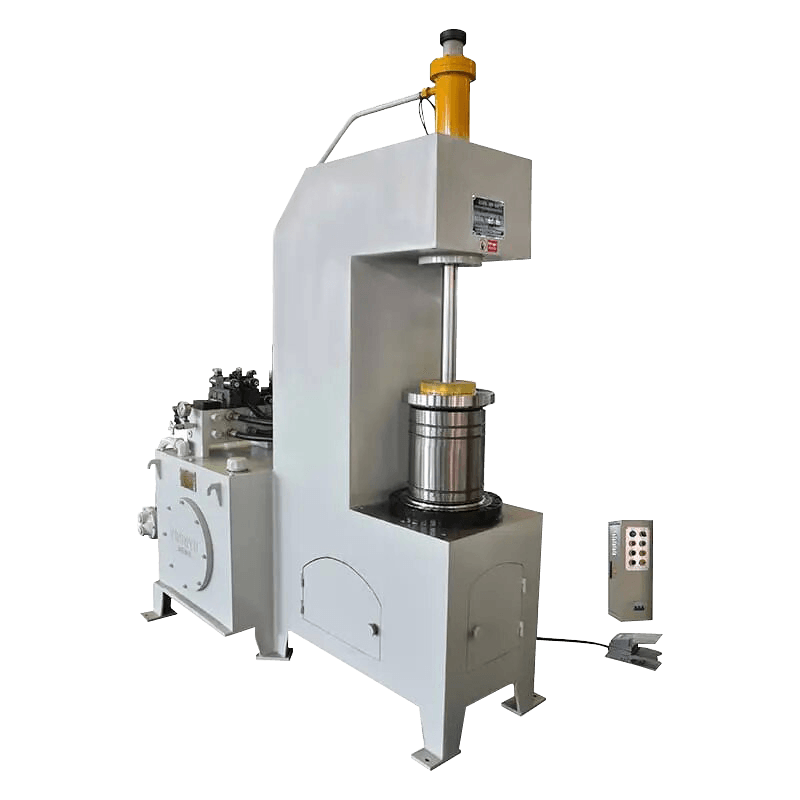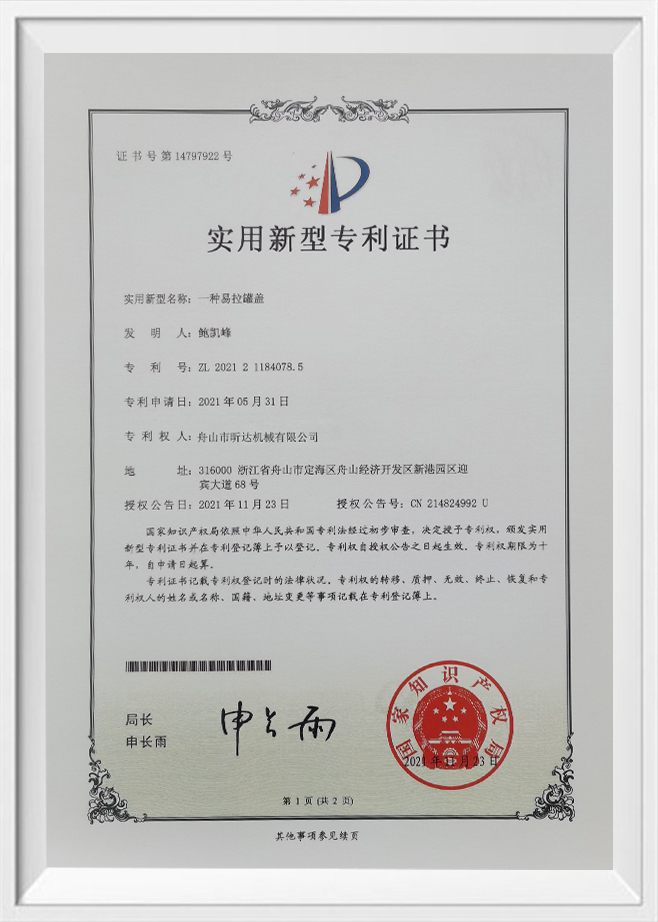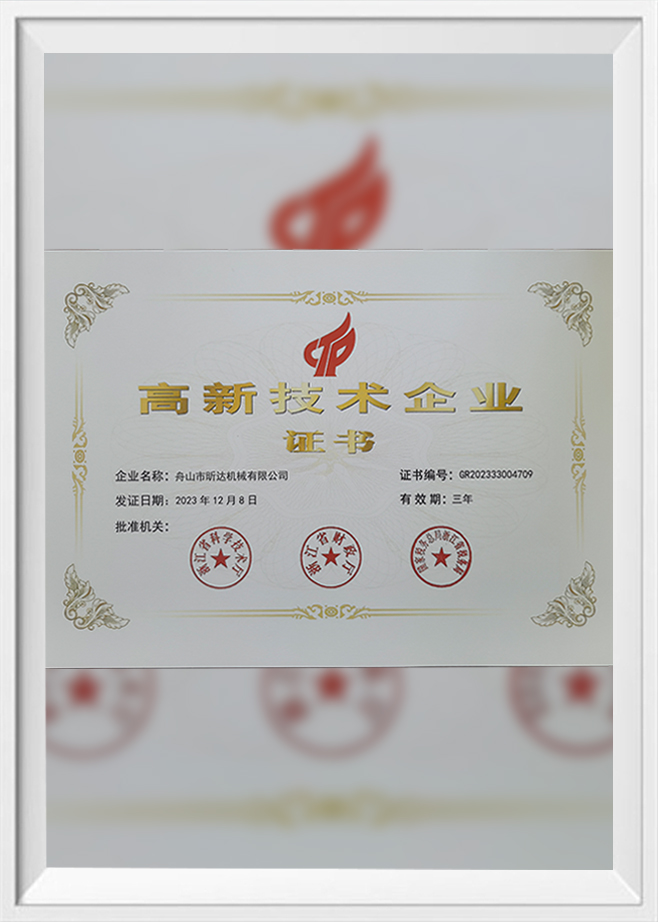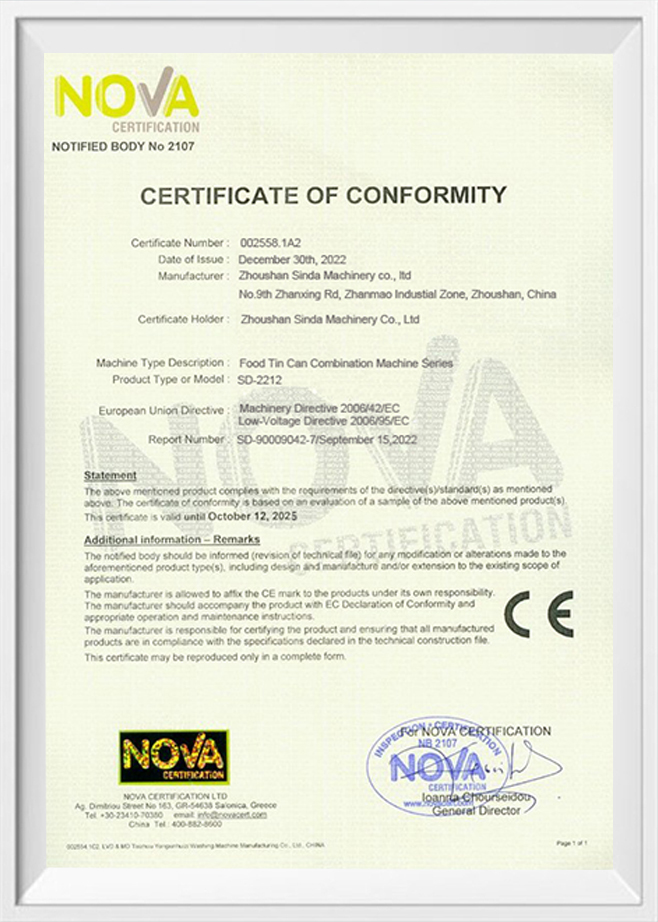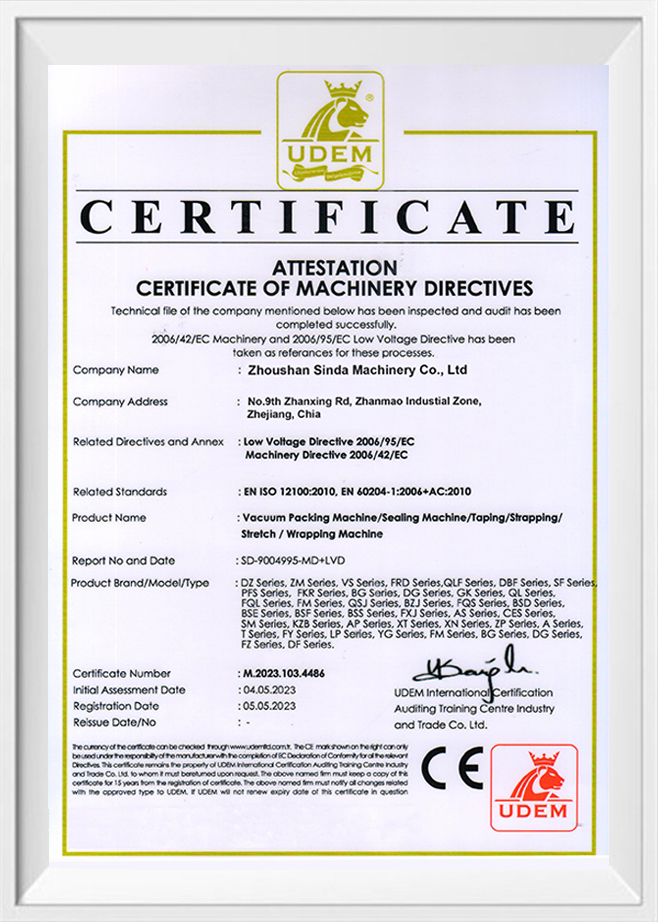Customizes production line for different kinds of bottoms, lids, covers, and closure caps producing.
Metal Lid/Bottom Production Line
Product Description
-
Introduction to Food Tin Can Production Lines Food tin can production lines are designed to manufacture, assemble, and seal metal cans for food products. These production lines integrate multiple proc...
READ MORE -
Automation Compatibility of the 3 piece food tin can production line The discussion around the level of automation within a 3 piece food tin can production line often centers on whether such a system ...
READ MORE -
General Structure of Automation in Easy-Open-End Production Lines The automation level of an easy-open-end production line is shaped by the integration of mechanical systems, control technologies, and...
READ MORE
1. Enhancing Productivity through Advanced Automation
Automation has revolutionized manufacturing processes across industries, and Metal Lid/Bottom Production Line are no exception. The integration of advanced robotic systems and automated machinery has significantly enhanced productivity by streamlining workflows and reducing reliance on manual labor.
Modern manufacturing facilities utilize robotic arms for precise material handling and manipulation during the stamping, forming, and sealing processes. These robots operate with high-speed precision, ensuring consistent quality and minimizing production cycle times. Automated conveyor systems further optimize the flow of materials and finished products, reducing downtime and increasing throughput rates.
Real-time monitoring and control systems play a crucial role in optimizing machine utilization and operational efficiency. These systems provide operators with comprehensive insights into production metrics such as output rates, defect rates, and equipment performance. By analyzing real-time data, manufacturers can identify and address potential bottlenecks swiftly, thereby maximizing productivity and minimizing production costs.
Automation enhances workplace safety by minimizing direct human interaction with heavy machinery and hazardous materials. This proactive approach not only improves employee safety but also enhances overall operational reliability and consistency in product quality. Manufacturers benefit from reduced labor costs and increased operational efficiency, allowing them to remain competitive in a global market characterized by rapid technological advancements.
2. Ensuring Quality Control and Compliance
Quality control is paramount in Metal Lid/Bottom Production Line to meet stringent regulatory requirements and uphold brand reputation for reliability and safety. Implementing robust quality assurance protocols throughout the production line is essential to mitigate risks and ensure consistent product quality.
Advanced inspection technologies such as vision systems, automated measurement tools, and quality sensors play a pivotal role in detecting defects and deviations from specified standards. Vision systems utilize high-resolution cameras and image processing algorithms to inspect surface finishes, dimensions, and overall product integrity. Automated measurement tools provide precise dimensional analysis, ensuring compliance with tight tolerances and specifications.
Adherence to international standards such as ISO 9001 for quality management systems is crucial for demonstrating organizational commitment to quality and continuous improvement. Regular audits and performance evaluations verify compliance with industry-specific guidelines and regulatory requirements, instilling confidence among consumers and stakeholders alike.
Quality control measures extend beyond manufacturing processes to include rigorous testing and validation of raw materials and finished products. Material traceability and batch tracking systems ensure transparency and accountability throughout the supply chain, from procurement to distribution. By prioritizing quality control, manufacturers not only mitigate operational risks but also differentiate themselves in a competitive marketplace driven by consumer demand for reliable and safe products.
3. Leveraging Technological Advancements for Innovation
Technological advancements continue to drive innovation in Metal Lid/Bottom Production Line, offering opportunities for efficiency gains and product customization. Advanced materials, such as lightweight alloys and eco-friendly coatings, enable manufacturers to meet sustainability goals without compromising product integrity or performance.
Digitalization and the adoption of Industry 4.0 principles facilitate interconnectedness among production systems, enabling real-time data analytics and predictive maintenance. IoT-enabled sensors and smart devices monitor equipment performance and environmental conditions, optimizing resource utilization and minimizing downtime. Predictive analytics algorithms identify potential equipment failures before they occur, enabling proactive maintenance and ensuring continuous production.
Additive manufacturing, or 3D printing, represents a transformative technology in metal lid and bottom production. This innovative approach allows for rapid prototyping and customization of intricate designs, facilitating product innovation and responding swiftly to evolving market trends and consumer preferences. Additive manufacturing processes offer flexibility in design optimization and material utilization, reducing waste and enhancing production efficiency.
Advancements in digital modeling and simulation tools enable virtual testing and optimization of production processes, minimizing trial-and-error phases and accelerating time-to-market. Virtual simulations simulate various operating conditions and scenarios, allowing manufacturers to optimize production parameters and improve overall process efficiency.

 English
English عربى
عربى русский
русский
